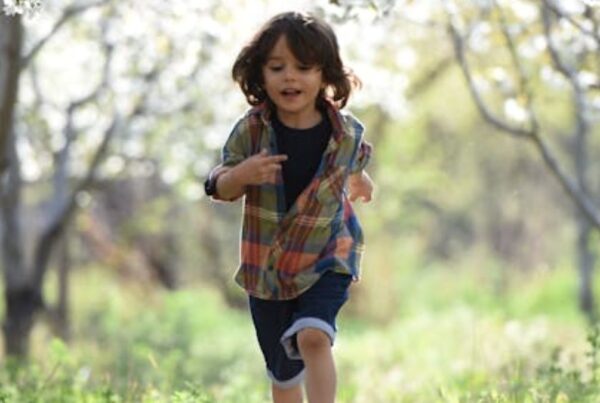Why does stigma in autism continue in a world that’s becoming more aware of differences? On paper, society has made progress. We see autistic role models on TV, more research than ever, and public campaigns for inclusion. Yet the stigma of autism still lingers—sometimes quietly, sometimes in the open.
Research shows that stigma can shape how people view autism, limit opportunities, and even discourage families from seeking support. But here’s the good news: stigma is not permanent. It changes as awareness grows, as people connect with autistic voices, and as society reframes difference as diversity.
So, what keeps stigma alive? Why do outdated ideas still affect how autistic people are treated? Let’s break it down using stories, studies, and fresh perspectives. By the end, you’ll see not just why stigma happens, but how every shift in mindset chips away at it.
What Is Stigma in Autism, Really?
At its simplest, stigma in autism means negative judgments based on differences in behavior or communication. Instead of seeing autism as part of human diversity, people attach labels that can limit inclusion.
One classic definition comes from sociologist Erving Goffman. He described stigma as a “deeply discrediting” trait that marks someone as different. In autism, that “difference” can be subtle—like avoiding eye contact—or very visible, such as stimming in public.
But here’s the twist: studies show autistic individuals themselves often see autism as value-neutral. It’s society that adds the negative meaning. A 2020 study in Disability & Society found that participants viewed autism as central to identity, not a flaw. The challenge, they said, came from how others misunderstood them.
Why Does Stigma Still Happen?
If awareness is growing, why does the stigma of autism still show up in daily life? Researchers point to a mix of factors:
- Lack of understanding: People often confuse autistic traits with rudeness or poor discipline.
- Cultural beliefs: In some societies, autism is viewed as a family burden rather than a natural variation.
- Invisible difference: Unlike physical disabilities, autism doesn’t have visible markers, so behaviors can be misread.
- Labels: Words like “disorder” or “condition” sometimes frame autism as something broken, instead of different.
According to a review in Frontiers in Psychology (Turnock et al., 2022), stigma is shaped by how much contact people have with autistic individuals, cultural context, and how traits are interpreted. Simply put, the less exposure, the higher the chance of misjudgment.
What Research Tells Us
Let’s ground this in numbers and real-world evidence:
- A 2016 Simons Simplex Collection study found over 65% of autistic children felt left out of activities.
- Around 82% struggled with making friends, showing how stigma can play out in peer groups.
- In South Korea, a 2011 study reported that two-thirds of autistic children were undiagnosed, partly due to stigma around lineage and family reputation.
- An Israeli study revealed families of autistic children felt more stigma than families of those with physical disabilities.
Statistics like these highlight the reach of stigma. But they also point to solutions: connection, exposure, and education can change outcomes.
Everyday Examples of Stigma
So, how does stigma actually show up? Picture these situations:
- A child is stimming in a grocery store. Strangers assume it’s bad behavior.
- A teen avoids eye contact at a party. Others label them “aloof” or “unfriendly.”
- An adult discloses autism at work. Co-workers treat them as less capable.
These are common stories worldwide. Yet they don’t reflect reality. Research consistently shows autistic individuals can thrive when environments are supportive and expectations shift.
A Quick Table: Misconceptions vs. Reality
| Common Misconception | Reality Supported by Research |
| Autism means lack of empathy. | Many autistic individuals show deep empathy, just expressed differently. |
| Autism only affects boys. | Girls are underdiagnosed due to stereotypes and subtler traits. |
| Autism equals intellectual disability. | Autism is a spectrum; many have average or above-average intelligence. |
| Autistic people cannot form friendships. | With understanding peers, autistic individuals build meaningful relationships. |
Isn’t it interesting how much stigma comes from myths rather than facts?
Culture and Stigma: A Global View
Culture shapes how autism is perceived. In South Korea, stigma can affect marriage prospects for relatives. In Japan, the term henken reflects prejudice toward children who are “different.” In the U.S., public meltdowns often invite quick judgments of “bad parenting.”
Despite differences, a common thread runs across countries: misunderstanding. When autism is framed as a weakness, stigma grows. When framed as diversity, inclusion flourishes.
The Role of Media
Can movies, shows, or social media shift stigma? Absolutely. Positive representation opens doors. Characters like those in Atypical or real voices like Temple Grandin’s remind audiences that autism is not a tragedy but a part of humanity.
A review in the Journal of Autism and Developmental Disorders notes that media stories highlighting strengths reduce stigma by showing relatable narratives. When people see autism as ability plus difference—not deficit—perceptions shift.

The Neurodiversity Movement
Enter neurodiversity. This movement reframes autism as a natural variation of the human mind. Instead of focusing on deficits, it highlights strengths and unique perspectives.
Advocates like Tito Mukhopadhyay and Temple Grandin push for acceptance rather than “fixing.” Their voices remind us: autism is not separate from identity—it is identity. Doesn’t that make stigma seem unnecessary?
Why Stigma Hurts Everyone
Stigma doesn’t just affect autistic individuals. It limits communities, too. When stigma keeps people from jobs, classrooms, or friendships, society misses out on creativity, innovation, and empathy.
Think about companies that thrive because of neurodiverse teams. Or classrooms enriched when different learning styles spark fresh ideas. Stigma blocks these opportunities. Inclusion opens them.
Strategies That Break Stigma
So, what actually works to reduce stigma? Research points to several strategies:
- Education programs: When schools teach about autism, peer acceptance rises.
- Direct contact: Interactions with autistic individuals increase empathy.
- Language shifts: Using terms like “spectrum” or “condition” instead of “disorder” softens stigma.
- Inclusive spaces: Autism-friendly environments, from theaters to workplaces, encourage acceptance.
- Positive storytelling: Media that highlights autistic strengths reduces bias.
These aren’t abstract ideas—they’ve been tested. For instance, a 2017 study in Autism Research found that children who received autism education were more likely to include autistic peers in play.
Reframing the Narrative
What if instead of asking, “How do we fix autism? ” society asked, “How do we support people with different ways of thinking? ” That small shift reframes autism from deficit to diversity.
Parents, teachers, employers, and communities can start by emphasizing strengths. Is an autistic child deeply focused on a topic? That’s dedication. Does an autistic adult prefer routine? That’s reliability.
When the lens shifts, stigma fades.
Two Stories That Inspire Change
Story One: From Labels to Leadership
Temple Grandin was once described as “different” in ways that invited stigma. Today, she’s a world leader in animal science and a best-selling author. Her success reframes autism as a strength.
Story Two: Poetry Beyond Silence
Tito Mukhopadhyay, once nonverbal, used writing to express a rich inner world. His books challenge outdated ideas and invite society to see beyond surface traits.
Aren’t these stories proof that stigma is not the final word?

FAQ: Stigma in Autism
1. Is stigma the same as discrimination?
Not quite. Stigma is the negative label or judgment. Discrimination is the action that follows. Both can overlap, but stigma often comes first.
2. Why does autism stigma look different across cultures?
Because culture shapes beliefs. In some places, autism is linked to family honor. In others, it’s framed as a medical condition. The lens changes the stigma.
3. Can language really reduce stigma?
Yes. Words carry weight. Calling autism a “disorder” suggests something broken. Calling it a “spectrum” signals variety. Small shifts matter.
4. Do autistic people want to hide their diagnosis?
Some do, to avoid stigma. Others embrace identity-first language, saying, “I am autistic.” It depends on personal choice and context.
5. How can everyday people fight stigma?
Start small. Learn the facts, challenge myths, and support inclusion. Even simple acts—like explaining stimming to a friend—chip away at stigma.
Choosing Understanding Over Stigma
Stigma in autism is real, but it isn’t fixed in stone. At Shining Moments ABA, we’ve seen how awareness, direct contact, and positive stories can reduce it. Research shows that when families and communities embrace differences, acceptance grows. Stories from autistic voices prove that difference is not less—it’s diversity.
The question is, how do we each play a role in ending stigma? The answer may be simpler than we think: listen, learn, and include. Every time someone chooses understanding over judgment, stigma loses ground. Shining Moments ABA is here to walk that journey with you. If you’re in Maryland and looking for guidance, reach out to us—we’re ready to support your family with compassion and practical tools.
So next time you see autism in action, pause and reframe. What if these differences are not flaws but gifts? That’s the mindset that turns stigma into acceptance.
More Like This Articles
 Shining Moments ABA Therapy
Shining Moments ABA Therapy
Shining Moments ABA Therapy
 Choosing the Right ABA Provider in Maryland and New Jersey
Choosing the Right ABA Provider in Maryland and New Jersey
Choosing the Right ABA Provider in Maryland and New Jersey
 The Benefits of ABA Therapy: From Communication to Social Skills
The Benefits of ABA Therapy: From Communication to Social Skills



